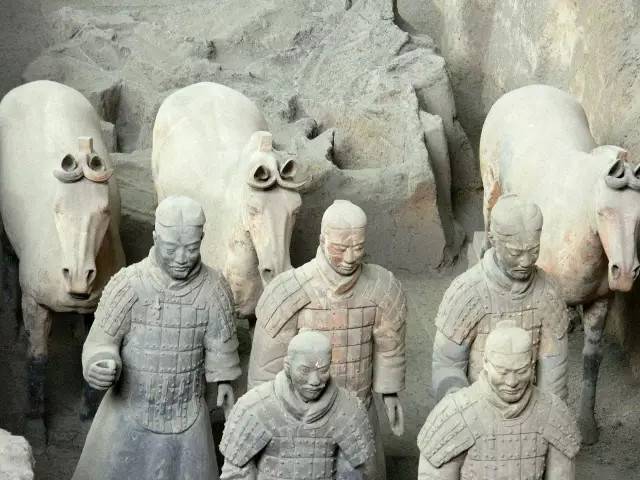(单词翻译:单击)
Over 400 funeral pits and a massive quantity of other goods were recently excavated from the Emperor Qinshihuang (the first Emperor of Qin) in Shaanxi province.
日前,位于陕西省的秦始皇陵中挖掘出了400多个葬坑和大量的其他物品。
Most of the burial objects were animal remains or animal-shaped pottery and copperware.
其中大部分的陪葬物品都是动物尸体、或者动物形状的陶器和铜器。
Most of the objects were related to horses - either horse remains or horse-shaped goods.
大多数出土文物都和马有关--既有马的尸体,也有马形状的物品。

In addition, the remains of a number of other species, including deer, muntjac, cranes and swans, were also among the excavated objects.
此外,出土文物种还有其他一些动物的尸体,包括鹿、麂、鹤以及天鹅。
Historians believe that the number of harnessed or domesticated animals in the Qin Dynasty (221-206 BC) was 12, with horses being the most important due to their strategic value.
历史学家认为,秦朝(公元前221-206)可利用和驯养过的动物有12种,其中马因其战略价值而最为重要。
The discovery also proves that, dating back to 2,000 years ago, animals were not only hunted for meat, but were also used more widely in art and society.
这一发现也证明,在2000年前,动物不仅仅只是被猎杀取肉,还被广泛用于艺术和社会活动。
The mausoleum of Emperor Qinshihuang is five kilometers east of Lintong County, 35 kilometers from Xi'an City in Shaanxi Province.
秦始皇陵位于临潼县东五公里处,距西安市有35公里远。
In the spring of I974, when peasants sank a well in a village near the Mausoleum of Emperor Qinshihuang, burial terracotta warriors and horses were found.
在1974年春天,秦始皇陵墓附近一村子的村民在挖井时发现了墓葬兵马俑。


